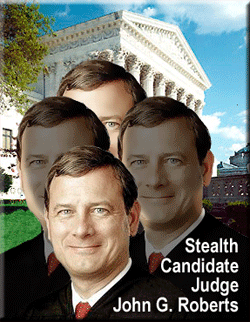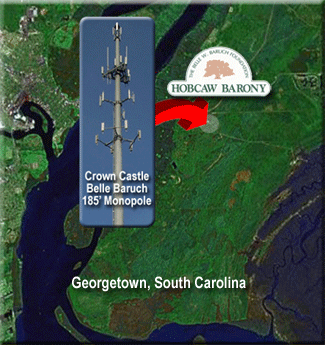|
Procedural errors  shadow nominee's shadow nominee's
telecom views
July 26, 2005 -- While interest groups at both ends of the political spectrum are focused upon identifying Supreme Court Justice nominee Judge John G. Roberts' positions on Roe v. Wade, the invalidation of affirmative action and other social and cultural issues, the PCIA and other industry organizations are trying to profile Judge Roberts' views on telecommunications issues. However, since he has written relatively few opinions in his two year tenure as a judge on the U.S. Court of Appeals for the D.C. Circuit, his views on a wide variety of telecom issues are still unknown. Unfortunately, two opinions he authored for the majority shed limited insight about the jurist's positions.
One case involved whether the Federal Communications Commission could require new televisions to include digital tuners. Judge Roberts wrote at length the possibility that the court was not authorized to hear the case because the plaintiffs had filed their challenge a day too early. A second case in his portfolio of 49 opinions involved a tower siting issue in Georgetown, SC. The court concluded that it lacked jurisdiction over the petitioner's claim that a BellSouth 185' monopole was constructed without an environmental assessment.
SHPO snafu was basis for tower petitioner's position
In 1996 BellSouth constructed a 185' monopole inside the boundaries of Hobcaw Barony, a tract of land in Georgetown that had been included on the National Register of Historic Places two years earlier. The 17,500 acre nature and historic preserve was once owned by Bernard Baruch, the 20th Century financier and confidant to industry leaders and Presidents. The huge property is also home to research facilities operated by the University of South Carolina and Clemson University.
As required, BellSouth contacted the South Carolina State Historic Preservation Officer (SHPO) before building the monopole, stating that no known National Register of Historic Places are located within the proposed tower site, although their correspondence did state that it was "inside the northern boundary fence of the Hobcaw Barony Complex." Overlooking the fact that a protected site could be affected, the SHPO replied that the Hobcaw tower "should have no effect on any properties included in or eligible for inclusion in" the National Register. 
Therefore, no environmental assessment was prepared under the applicable National Environmental Policy Act (NEPA) regulations, a requirement that would be triggered by a possible effect on a registered site - and the Federal Communications Commission had no occasion to consider the issue of significant impact through its NEPA process. As for the NHPA Section 106 process, the FCC did not make a formal evaluation of the effects of the communications site.
Georgetown community activist James M. "Marty" Tennant quickly noticed the 185' structure when it was erected in the Low Country and contacted BellSouth. He then wrote to the federal Advisory Council on Historic Preservation to call its attention to "a failure of the Section 106 process" involving the tower site approval.
Correspondence from Tennant during December of 1998 to ACHP ended by asking them and other individuals who were copied on the letter - including the then chairman of the FCC - to "collectively ensure that the required Section 106 review process is triggered when required by law."
ACHP takes its time to dog the FCC
In February of 1999 Tennant followed up with a second letter to the ACHP to examine any findings that the FCC had made regarding the tower. The ACHP contacted the FCC and requested a reply. Hearing nothing from the FCC, the ACHP contacted them again in July 1999. Six months later the FCC finally responded in January 2000. The FCC stated replied that it delegates to license applicants the responsibility of gathering the information necessary to determine potential environment effects of proposed towers. Tennant believes, as do others, the procedure is tantamount to allowing the fox to guard the hen house.
BellSouth did not file an environmental assessment, the FCC explained, because "neither the SHPO nor the licensee identified any significant effects on historic properties". In a reply to the FCC in February 2000 the ACHP asked for the environmental impact documentation that BellSouth had provided.
Two years later, the ACHP had not completed it inquiry into the FCC's compliance with Section 106 and Tennant turned to the U.S. Court of Appeals for the District of Columbia Circuit. He filed a writ of mandamus and declaratory and injunctive relief on February 12, 2002. He named several parties as respondents: the FCC, Cingular Wireless (which had acquired the tower from BellSouth, Dr. Rodger Stroup (the South Carolina SHPO) and Crown Castle that currently owns and manages the site.
He also requested a writ of mandamus to require the FCC and the ACHP to follow the required Section 106 procedures, a declaration that the Hobcaw tower adversely affects Hobcaw Barony, a declaration voiding the SHPO's prior determinations, and several injunctions to prevent Cingular and Crown Castle from collocating additional wireless carriers on the tower, to enjoin the FCC from permitting or licensing additional facilities in the Hobcaw Barony area, and to enjoin the SHPO from "assuming the duties of the FCC in regard to Section 106 compliance."
The court ruled that although they would have had jurisdiction if Tennant had properly notified the FCC under the avenues available to him and the FCC did not respond in an appropriate amount of time, he did not properly seek a remedy from the FCC or initiate any proceeding in that agency before resorting to the District of Columbia Circuit Court.
Court says a "cc" isn't adequate
The court's opinion says that the closest thing Tennant did to informing the FCC for action is his December 1998 letter to the ACHP that he sent to the chairman of the FCC. Judge Roberts said for the majority, "It would be unreasonable to hold that the FCC, by virtue of being one of several recipients copied on the first letter, was required to act when even the direct addressee of that letter did not do so unit it received a more specific request."
In dismissing the petition, Judge Roberts' explained that because Tennant never initiated a proceeding with the FCC, the court did not have authority to issue a writ of mandamus in aid of prospective jurisdiction to review action the Commission might take. If there had been a proceeding of some kind instituted before an agency or court that might lead to an appeal, it would have been within the D.C. Circuit Court's appellate jurisdiction.
"It is not too much to ask that parties seeking mandamus relief take at least the first preliminary step that might lead to appellate jurisdiction in this court in the future," Judge Roberts said.
The court further noted that "Tennant also seeks mandamus relief against the ACHP, but he points to no jurisdictional statute - and we can find none - that authorizes this court to review the Council's actions in the first instance."
"As for the SHPO, Tennant asks not for mandamus but rather for declaratory and injunctive relief; this court lacks jurisdiction to hear such claims in the first instance. The same is true with respect to Tennant's claims for injunctive relief against Cingular and Crown Castle. For the majority opinion written by Judge Roberts, please see TENNANT .
FCC denies Tennant's three CLEC arbitration petitions
While Marty Tennant was objecting to the Hobcaw Barony tower placement, he was entering the newly opened local telecommunications market serving as president of Low Tech Designs, Inc., a Georgia company that was a competitive local exchange carrier. Low Tech Designs was denied three petitions before the FCC in 1997 that requested that the FCC assume jurisdiction over its interconnection disputes in Georgia, Illinois, and South Carolina. LTD argued that the three states had failed to act on its arbitration request in compliance with section 252 of the Telecommunications Act. The FCC ruled that the state regulators had acted "in a timely manner" in accordance with section 252 and had delayed arbitration proceedings due to LTD's failure to satisfy the statutory requirements for compulsory arbitration.
Judicial caution favored by nominee
The nomination of Judge Roberts to replace Justice Sandra Day O'Connor is of great significance to the nation's future because she has been the decisive vote in many 5-to-4 decisions. During the past 11 years Justice O'Connor has sided with the majority in more decisions than any other justice.
Although seen as a stealth candidate due to his short time as a justice, Judge Roberts in his 49 published opinions exhibits a philosophy that favors a cautious judiciary and aligns him in many instances with the conservative wing of the current Supreme Court.
Additional insight into the nominee's telecommunications views might surface shortly. The Bush administration announced yesterday that it plans to release documents from Judge Roberts' tenure in the White House counsel's office in the mid-1980's and his earlier job working for the attorney general, but will not make public papers covering the four years he spent as principal deputy solicitor general starting in 1989.
A strong adherent to legislation, Judge Roberts has said that lawyers who do not study the plain words of relevant law should be reminded of the three basic rules of statutory interpretation taught by Felix Frankfurter, before being appointed to the Supreme Court, at Harvard Law School: "(1) Read the statute; (2) read the statute; (3) read the statute!"
The upcoming confirmation hearings will support the propriety of Judge Roberts declining to spell out how he would rule on a specific case, so many telecommunications issue probes will remain unanswered until they begin to be heard during the next term of the Supreme Court to begin on the first Monday in October.
Supported by his excellent character and commendable record of achievement, including 39 appearances before the Supreme Court, support for Judge Roberts'  professional qualifications crosses political party lines. professional qualifications crosses political party lines.
On March 22 in a landmark 9-0 decision, the U.S. Supreme Court justices dealt a blow to tower siting activities when they said the federal law that was designed to encourage the growth of the telecommunications industry does not allow cities to be sued for attorneys' fees and damages for refusing to permit a communications tower. See: Tower Siting Set Back .
Copyright © Wireless Estimator, Inc. Please request reprint permission.
|